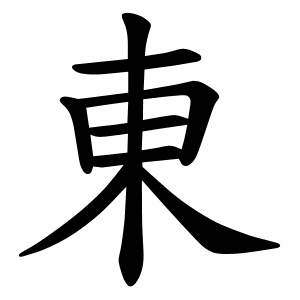東
- east, the eastern direction;
Etymology
Originally a pictograph, depicting a bundle or sack tied at both ends, similar to 束 (“to bind”) or 橐 (“bag, pouch”).
Later, the character was loaned to mean “east,” the direction.
In Shuowen Jiezi (許慎, 2nd c.), 東 was reinterpreted as 木 (tree) + 日 (sun), symbolizing the sun rising in the east. This explanation was later disproven after the discovery of oracle bones, but it influenced traditional understanding for centuries.
Already in the Shang dynasty, 東 was consistently used to indicate the eastern direction.
Usage in Korean
동양 (東洋) – the Orient, East Asia
동국 (東國) – the Eastern country, Korea
동유 (東儒) – Eastern Confucians, Korean scholars
주인 (做東, “act as host”) – host, master
Words that derived from 東
Additional notes
In Zhou ritual culture, the east was considered the seat of the ruler. The Book of Rites (禮記) records that during the Han dynasty, the host typically sat in the east, facing west.
This association gave 東 an extended sense of “master” or “host,” still seen in expressions like 做東.
In later scripts (clerical, cursive), 柬 (“to choose, select”) was often simplified into 東, leading to forms like 鍊 → 錬.
In simplified Chinese, 东 was further reduced to a form where the internal hook strokes were straightened.
- 木田 (DW)
- ⿻ 木 日
- ⿻ 束 一
